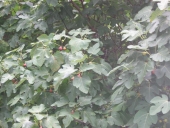
 4
4




Joy to the world
But what will come?
When the lights go down on everyone
I sure don't wanna be around here when the whistle blows

 1
1




Hans Albert Quistorff, LMT projects on permies Hans Massage Qberry Farm magnet therapy gmail hquistorff
 2
2




This is all just my opinion based on a flawed memory

 1
1




Ben Zumeta wrote:I have been told by knowledgable people vegetative cloning of Pome and Stone fruits is not worth the effort, because if it works at all, the roots will be weak.
'What we do now echoes in eternity.' Marcus Aurelius
How Permies Works Dr. Redhawk's Epic Soil Series
 3
3




Joylynn Hardesty wrote:
Ben Zumeta wrote:I have been told by knowledgable people vegetative cloning of Pome and Stone fruits is not worth the effort, because if it works at all, the roots will be weak.
Does anyone know why the roots of vegetative cloning is said to be weaker?
 1
1











 2
2




Joylynn Hardesty wrote:
Ben Zumeta wrote:I have been told by knowledgable people vegetative cloning of Pome and Stone fruits is not worth the effort, because if it works at all, the roots will be weak.
Does anyone know why the roots of vegetative cloning is said to be weaker?
Hans Albert Quistorff, LMT projects on permies Hans Massage Qberry Farm magnet therapy gmail hquistorff
 4
4







 6
6




Oak Summit Nursery - Zn 3b Manitoba, Canada
www.oaksummitnursery.ca
@OakSummitNursery
 1
1




 3
3




 3
3




Best luck: satisfaction
Greatest curse, greed

 1
1




 3
3




Eino Kenttä wrote:Side note on the subject of non-graft cloning of apples: From what I've read, some wild apple species, including Malus sieversii (the main ancestor of modern apples) produce suckers. Wouldn't it be neat to have an apple landrace with the suckering trait, so you can dig up suckers from the nicest seed-grown trees and share around? I think I'm gonna try to make this happen. I've found a source of Malus sieversii (yay!) and also been given a sapling supposedly from an old norwegian variety which was described as suckering (if it's true, double-yay!) so we'll see in a couple decades if I can start sharing out own-root apple suckers...
Interesting thing about the supposed sucker I recieved, though: it has what very much looks like a taproot. So either the suckers form something resembling taproots, or it's actually a seedling. Hoping for the former...
Education: "the ardent search for truth and its unselfish transmission to youth and to all those learning to think rigorously, so as to act rightly and to serve humanity better." - John Paul II
 2
2




Does anyone know why the roots of vegetative cloning is said to be weaker?
Nurturing a full spectrum of favorite ornamental and edible trees, shrubs, vines, perennials, and groundcovers all grown on their own roots...
All to better enjoy the profound beauty and wonder of nature. Check out my site at www.onmyownroots.com !
 1
1




"In action, watch the timing."-Tao Te Ching
"Jus' Press"-Ledward Kaapana




"In action, watch the timing."-Tao Te Ching
"Jus' Press"-Ledward Kaapana
 1
1




M.K. Dorje Sr. wrote:I've been propagating various fruit trees and bushes from cuttings, layerings, seeds and grafting onto rootstocks for over 30 years now. I've had a lot of successes and a lot of failures. One thing that I'm not good at is chip budding, which is the main type of grafting done to propagate trees in the prunus genus during June and July. I've also had bad luck with late winter bench grafting with this group.
I would like to find out if I could grow peaches, European/Japanese plums and sweet/pie cherry trees from cloned cuttings using a cloning machine, such as the Turbo Klone shown in the photo earlier in this thread. I've never used one of these machines before, but I've watched a video or two where the grower said that a hydroponic system like Turbo Klone would grow cloned trees from the prunus group.
Has anyone on here had success with these cloning machines like the turbo klone? I'm especially interested if John Read had success with the clones in the photo. I'll also try sending him a purple mooseage and see what happened with his clones.




"In action, watch the timing."-Tao Te Ching
"Jus' Press"-Ledward Kaapana




This is all just my opinion based on a flawed memory


|
I'm so happy! And I wish to make this tiny ad happy too:
The new gardening playing cards kickstarter is now live!
https://www.kickstarter.com/projects/paulwheaton/garden-cards
|




